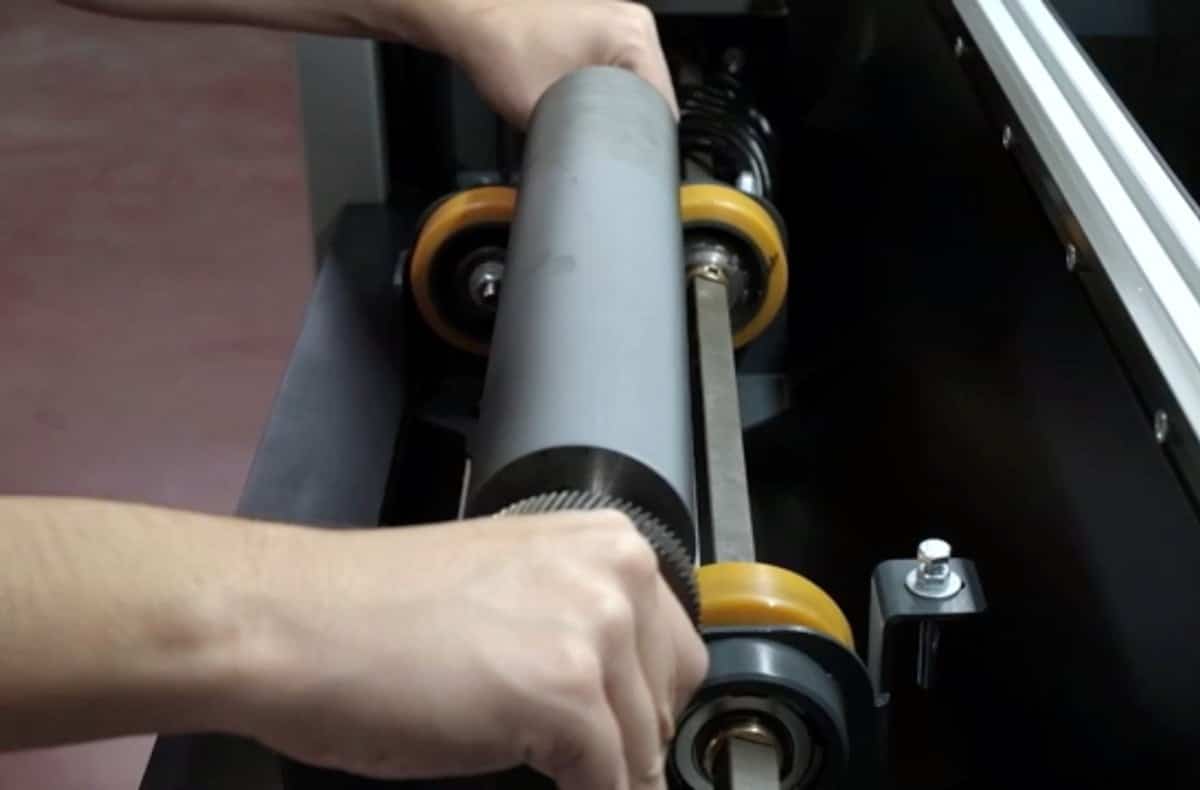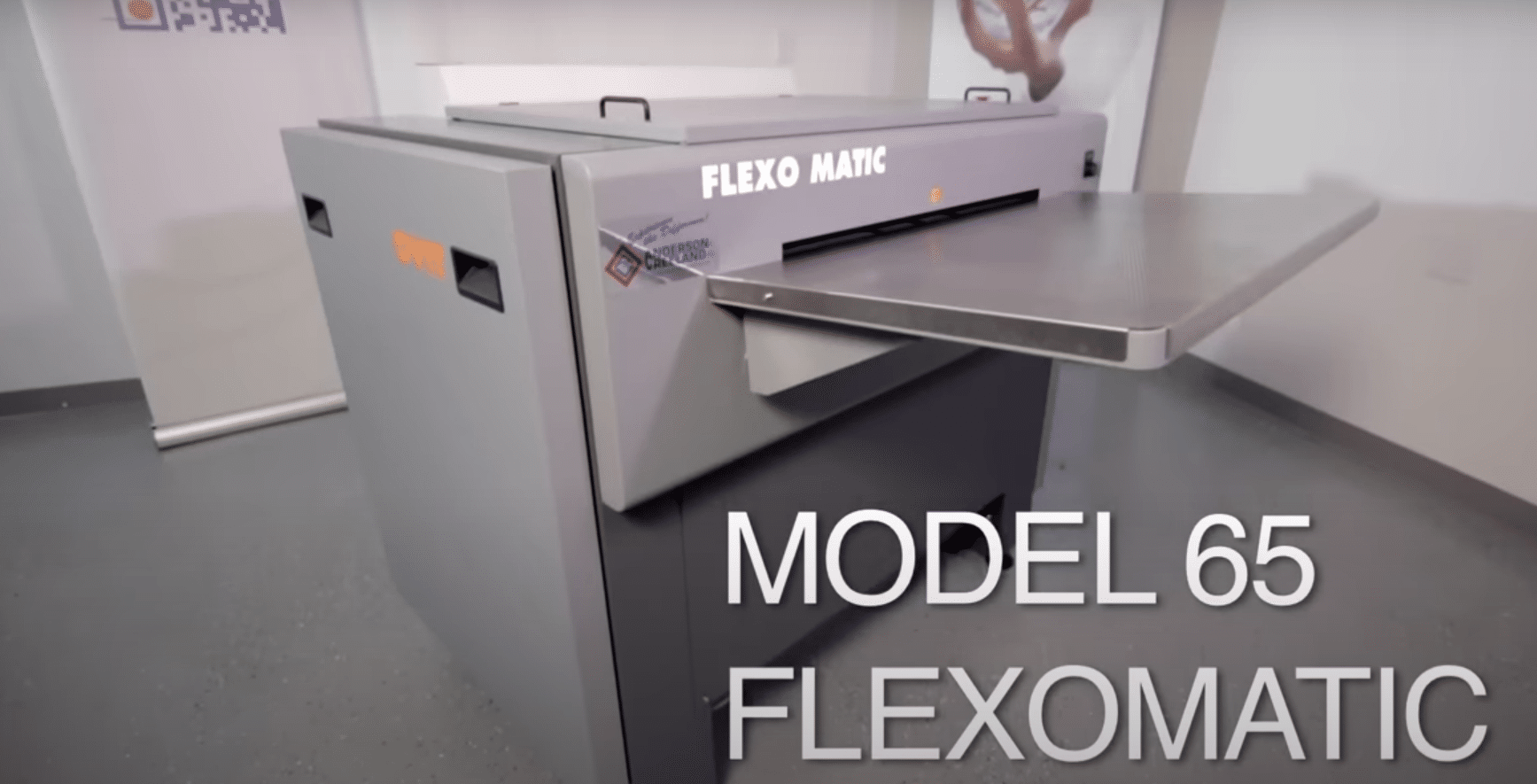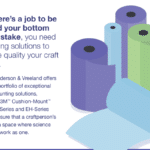The Supplies You Need to Keep Your Press Functioning Properly
A clean press is a productive press. Cleaning may seem tedious, but it plays a critical role in keeping your press maintained and functioning as intended.
To keep a clean press, you need to establish (and reinforce) basic cleaning standards in your pressroom. Help new operators understand how critical cleaning is to print quality, downtime, and the overall longevity of your plates and press equipment.
Beyond establishing a “culture-of-clean” in your press room, be sure to equip your team with the proper flexo cleaning supplies. The right solvents and brushes are essential to print performance and system longevity.
Automation Helps When Timing Matters
Ideally, flexo plates and anilox rolls should be cleaned immediately after a press run. Ink begins to dry quickly, making your press components harder to clean.
So why do people procrastinate when it comes time to clean? Just like our laundry and dishes at home, cleaning isn’t fun. It’s time consuming and often seems to get in the way of other urgent tasks, like setting up the next press run. We may tell ourselves, “I’ll get to that in a few minutes,” but those minutes can stretch into an hour or more.
That’s why many press rooms are introducing (or updating) their automatic washers. With these machines, operators can get a wash cycle started quickly – without taking costly time away from press make-ready functions. What’s more, automatic washers can help extend the life of your plates and rolls.
Cleaning an Anilox Roll
When anilox rolls get dirty, cell volume declines. That can lead to weak colors, ghosting, color match issues, and downtime. As we’ve said, anilox rolls should be cleaned quickly at the end of every job.
Manual cleaning: To clean, apply a liquid cleanser and wipe down the roll as soon as it’s removed from the press. For easy cleaning, choose an anilox cleaner specifically formulated to remove UV, UV-LED, or water-based inks – depending on your application.
To maximize performance, add weekly deep-cleans as part of your routine. Scrub the roll with a paste or cream cleaner, working the cleanser in with a strong circular motion. These weekly cleans can help loosen any remaining ink or coatings not removed during your routine daily cleaning.

Important points to remember when cleaning an anilox roll:
- Be quick: Clean the roll ASAP after a print run because the ink starts to dry or cure immediately.
- Use the proper brush: Choose the right brush for your anilox surface – stainless steel for ceramic anilox, and nylon or brass brushes for chrome surfaces. Anilox brushes are designed to sit above the cell surface and work in tandem with cream or paste cleaners. Never use steel wool or abrasive pads from your local home improvement store as these can wear down the engraving.
- Use the proper flexo cleaning supplies: The wrong cleaner will damage your roll. A highly corrosive cleaner may speed up cleaning, but over time it will seep through a ceramic roll to corrode the base.Likewise, a cleaner with the wrong pH can cause the ceramic to blister or delaminate. This can get tricky. Did you know water isn’t the right pH to clean water-based inks? Plain H2O can drop the pH level of water-based ink and actually cause it to seize up inside anilox cells, making cleaning more difficult.Your best bet is to use flexo cleaning supplies specifically designed for your roll surface and ink. Anything else (we’re looking at you, oven cleaner and engine degreaser) is likely to damage your roll and introduce inconsistencies in your print runs.
- Rinse (and repeat): Rinse immediately after cleaning. Prolonged exposure to any cleaner can soak into the roll and damage the base.
Manual prewash: For print shops with automatic cleaning machines, Anderson & Vreeland offers a variety of flexo cleaning supplies, including an anilox prewash solution specially formulated to remove hard to clean inks before putting the roll in a machine.
Blasting: Particle-blasting methods use high pressure air to scour a roll with sodium carbonate or poly beads. These particles break down dried ink and coatings inside anilox cells, restoring them to full capacity. Blasting can be done by a traveling service provider or with your own in-press anilox roll cleaner.
Laser cleaning: Laser cleaning uses light frequency and intensity to remove dried ink as well as coatings from anilox rolls and sleeves. Anderson & Vreeland represents laser cleaning systems from Eaglewood Technologies and has helped print shops implement tailored laser cleaning solutions.
Ultrasonic cleaning: An ultrasonic cleaning machine uses vibrations to clean an anilox roll. Different frequency settings can be used depending on the condition of your roll. Use the low frequency setting to achieve a deep cell clean, or the high frequency setting for a rapid clean.
Anderson & Vreeland offers flexo cleaning supplies for use in ultrasonic machines: The AV Sonic Cleaner and the AV Ultrasonic cleaner. Each works well with UV, UV-LED, and water-based inks, with the Ultrasonic formula offering a heavier-duty blend for those hard-to-clean anilox rolls. Choose the Ultrasonic formulation when you have old, unusable rolls that need reviving.
Cleaning a Flexographic Plate
Proper flexo plate cleaning can lead to better image transfer and can increase the life of your plates. Once again, flexo plates should be cleaned immediately after use.
As soon as a job is over, any remaining ink will start to dry. Screens and detailed reverses trap dried ink, making it difficult to remove – and no amount of manual cleaning or special flexo cleaning supplies may be able to remove ink from these areas.
Later, when soiled plates are pulled out of storage, the print job is affected. The screen relief is reduced, leading to lower print quality. Plus, dried ink flakes may break free, causing additional problems on the print run.
Manual cleaning: To clean a flexo plate, apply the proper liquid cleaning agent and wipe down the plate with a lint-free rag or a soft sponge. Use a soft bristle brush, as necessary, to remove ink from screens and reverses. As with anilox roll cleaning, choose a plate cleaner specifically formulated to remove UV, UV-LED, or water-based inks.

Important points to remember when manually cleaning a flexo plate:
- Test: Your plate manufacturer and the specialists at Anderson & Vreeland can help you choose the right plate cleaner. But for optimum assurance, perform a quick swell test on a small section of the plate before you clean the whole thing.
- Be gentle: Overzealous scrubbing can wear down plates, damaging small type or dots. Nylons, abrasive fabrics, and coarse brushes are not recommended.
- Time your soaks: Oversoaking plates can also cause damage. Follow the instructions on your plate cleaner as well as guidance from your plate manufacturer.
- Dry: Be sure to dry plates before storage to avoid miss-registration, embossing, or cracking.
Manual cleaning is best when you need to clean during runs, or when you have just a few plates that need to be cleaned daily. But for larger volume cleaning, automation is best.
Automatic plate washers: Automating the plate washing function facilitates long-lasting and consistent flexo plate performance. It also helps address the problem of plate-cleaning procrastination by making it easy to clean flexo plates!
The process is simple: Dirty flexo plates are fed into the automatic plate washer immediately after a press run. A cleaning solution is applied and then plates pass through a soft brush system for gentle, consistent cleaning. Plates are then rinsed and dried and ready for storage.
Flexo Cleaning Supplies
While clean flexo plates and anilox rolls are critical to a high-quality print run, they’re not the only part of your press that needs to be cleaned and maintained. Run regular checks of your drums, sleeves, and rolls to ensure no ink residue or adhesives will impact your results.
Talk to the flexo specialists at Anderson & Vreeland. We can consult on the proper flexo cleaning supplies for your inks, rolls, and equipment. We can also connect you with the latest automatic cleaners that will optimize efficiency, quality, and press consistency in your shop.
Talk With Us Today!




